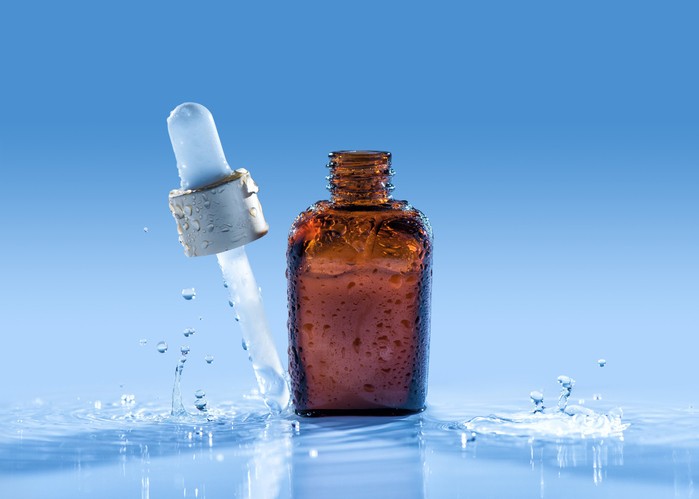 Hyaluronic acid serum being dispensed from a pipette, illustrating its liquid and hydrating nature.
Hyaluronic acid serum being dispensed from a pipette, illustrating its liquid and hydrating nature.
In the ever-evolving world of skincare, hyaluronic acid (HA) has emerged as a powerhouse ingredient, lauded for its exceptional hydrating capabilities. From serums and creams to masks and fillers, HA is now a staple in countless beauty regimens. But what exactly is hyaluronic acid, and why is it so beneficial for our skin and bodies? Let’s delve into the science behind this fascinating molecule and explore its many uses and advantages.
Understanding Hyaluronic Acid: A Natural Hydrator
Hyaluronic acid is a naturally occurring substance in the human body, classified as a humectant. Humectants are known for their ability to attract and retain moisture. Remarkably, HA can hold up to 1000 times its weight in water, making it an incredibly effective hydrator. You can find HA throughout your body, particularly in the skin, eyes, and the synovial fluid that cushions your joints. The hyaluronic acid used in skincare products isn’t extracted from the body, but rather is typically produced through a biofermentation process in a lab, utilizing bacteria.
As we age, our body’s natural production of essential substances like hyaluronic acid, collagen, and elastin decreases. This decline contributes to common signs of aging, such as loss of skin volume, reduced hydration, and diminished plumpness. Replenishing HA, therefore, becomes a key strategy in combating these age-related changes and maintaining youthful, healthy-looking skin.
Topical vs. Injectable Hyaluronic Acid: Different Delivery, Different Results
The skincare market is flooded with topical HA products promising intense hydration. While these products can be beneficial, it’s crucial to understand how hyaluronic acid works when applied to the skin’s surface versus when injected. The effectiveness of topical HA largely depends on its molecular size. HA molecules come in varying sizes, and this size dictates their ability to penetrate the skin.
Larger HA molecules are excellent at binding water, providing significant surface hydration. However, their size prevents them from penetrating deeply into the skin. Instead, they sit on the skin’s surface, creating a hydrating barrier and improving the skin’s outermost layer. Smaller HA molecules, on the other hand, can penetrate deeper into the epidermis, the top layer of skin, though they hold less water compared to their larger counterparts. For optimal surface hydration, skincare formulations often incorporate a blend of different molecular sizes of HA to target various levels of the skin.
Beyond topical applications, hyaluronic acid is also a key ingredient in injectable dermal fillers. These fillers utilize HA in a gel form, directly injected into the skin. Injectable HA fillers work in two ways: they physically add volume to the treated area and attract water to further enhance the filling effect. This makes them a versatile solution for addressing various cosmetic concerns, including:
- Cheek augmentation: Lifting and adding volume to the cheeks.
- Wrinkle reduction: Softening deep folds and creases around the mouth and chin (nasolabial folds and marionette lines).
- Under-eye rejuvenation: Improving the appearance of sunken, dark under-eye circles.
- Lip enhancement: Hydrating and adding volume to the lips.
- Hand and earlobe rejuvenation: Restoring volume and a more youthful appearance to hands and earlobes.
Benefits and Uses of Hyaluronic Acid in Skincare
Whether topical or injectable, hyaluronic acid offers a range of benefits, making it a sought-after ingredient in skincare and cosmetic procedures.
Topical Hyaluronic Acid Benefits:
- Intense Hydration: Attracts and retains moisture, combating dryness and dehydration.
- Improved Skin Texture: Hydrated skin appears smoother, softer, and more supple.
- Reduced Appearance of Fine Lines and Wrinkles: By plumping the skin with moisture, HA can temporarily diminish the visibility of fine lines and wrinkles.
- Enhanced Skin Barrier Function: Hydrated skin supports a healthy skin barrier, protecting against environmental aggressors.
- Suitable for Most Skin Types: Generally well-tolerated, even by sensitive skin, and safe for use during pregnancy and breastfeeding.
Injectable Hyaluronic Acid Benefits:
- Volume Restoration: Effectively replaces lost volume in areas like cheeks and under-eyes.
- Wrinkle Smoothing: Fills in deeper wrinkles and folds for a more youthful appearance.
- Facial Contouring: Sculpts and defines facial features.
- Long-lasting Results: Results can last for several months, depending on the product and treatment area.
Hyaluronic Acid: Hype or Holy Grail?
Topical hyaluronic acid is undeniably a highly effective moisturizer and a valuable addition to any skincare routine focused on hydration. It delivers noticeable improvements in skin texture and the appearance of fine lines by boosting surface hydration. However, it’s important to have realistic expectations. Topical HA cannot replicate the volume-restoring effects of injectable HA fillers. Marketing claims that position topical HA as a “topical filler” are misleading.
For those seeking to address volume loss and skin laxity associated with aging, injectable HA fillers remain the gold standard. Topical HA excels as a daily hydrator, particularly beneficial for individuals with dry skin or those seeking a dewy, moisturized complexion, especially during colder, drier seasons.
In conclusion, hyaluronic acid is far more than just hype. It’s a scientifically-backed ingredient with proven hydrating benefits for topical use and significant volume-restoring capabilities when used in injectable fillers. Understanding the difference between these applications is key to effectively incorporating HA into your skincare strategy and achieving your desired results. Whether you choose a hydrating serum or consider dermal fillers, hyaluronic acid offers a powerful approach to maintaining skin health and addressing signs of aging.
